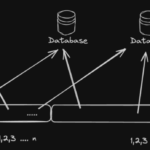How to handle database schema changes in production is a crucial topic for organizations seeking to maintain database integrity while evolving their applications. As businesses grow and adapt, the need for database modifications becomes inevitable, yet poorly managed changes can lead to significant downtime and data loss. Understanding the best practices and strategies for implementing these changes ensures that systems remain reliable and efficient.
In production environments, the risks associated with unplanned schema changes can be severe. Thus, effective schema management is not just about making changes but doing so in a way that enhances system reliability and minimizes disruptions. From employing backward compatibility to using version control, knowing the right approach can make all the difference.
Importance of Database Schema Management: How To Handle Database Schema Changes In Production

Managing database schema changes in production environments is crucial for maintaining the integrity and performance of applications. A well-organized schema management process allows teams to implement changes smoothly, minimizing downtime and preventing data loss. Without proper management, the risks associated with unplanned schema changes can escalate, leading to significant operational disruptions.The significance of managing schema changes lies in the potential impact on system stability and user experience.
Unplanned changes can introduce inconsistencies in the database, leading to application errors or data corruption. Additionally, improper handling of schema migrations can result in increased technical debt, making future changes more challenging and error-prone. A systematic approach to schema management helps in identifying potential issues early, facilitating better planning and execution of changes.
Risks Associated with Unplanned Schema Changes
Unplanned schema changes can pose several risks that jeopardize the reliability of a production system. These risks can lead to cascading failures if not addressed proactively. The following points highlight these critical risks:
- Data Loss: Unplanned changes can inadvertently overwrite or delete vital data, leading to irretrievable information loss.
- System Downtime: Inadequately tested schema changes may cause applications to crash or become unresponsive, resulting in unplanned outages.
- Performance Degradation: Schema alterations without proper optimization can lead to slower query responses, affecting user satisfaction and overall application performance.
- Incompatibility Issues: Changes may introduce discrepancies between different components of the application or with external systems, leading to integration failures.
- Increased Maintenance Costs: The longer an organization operates with a flawed schema, the more complex and costly it becomes to correct issues as they arise.
Enhancing System Reliability through Proper Schema Management
Implementing a structured schema management approach significantly enhances system reliability. Effective schema management practices contribute to the overall robustness of the database infrastructure. The key elements of such practices include:
- Version Control: Keeping track of schema changes through version control systems allows teams to revert to previous states if needed, ensuring that changes can be managed easily.
- Automated Migration Scripts: Utilizing scripts that automate schema changes reduces human error and enhances the consistency of deployments across different environments.
- Thorough Testing Procedures: Rigorous testing of schema changes in staging environments before applying them in production helps in identifying potential issues that could affect system performance.
- Rollback Strategies: Establishing clear rollback procedures ensures swift recovery from failed migrations, minimizing downtime and data loss.
- Documentation: Maintaining comprehensive documentation of schema changes aids in knowledge transfer among team members and provides a reference for future modifications.
Strategies for Handling Schema Changes
In the realm of database management, schema changes are an inevitable part of maintaining and evolving an application. As applications grow and adapt to user needs or technological advancements, the database schema often requires modifications. Employing well-defined strategies for handling these changes can mitigate risks and ensure a smooth transition while preserving data integrity and application performance.Common strategies for implementing schema changes include backward compatibility, versioning, and shadow migrations.
Each of these strategies offers unique advantages and disadvantages, making it crucial to choose the right approach based on project requirements and team capabilities.
Backward Compatibility, How to handle database schema changes in production
Backward compatibility is a strategy where the new schema is designed to support existing applications that rely on the previous schema. This means that even after changes are made, older versions of applications can still function without interruption.
- Pros:
Ensures that existing applications continue to operate smoothly, reducing the risk of disruptions.
To support this shift, it’s essential to know how to optimize database performance for large applications. Effective optimization not only enhances efficiency but also ensures that businesses can quickly analyze and act on large datasets, aligning with the demands of modern data-driven environments.
- Cons:
Can lead to increased complexity in the schema, as it must accommodate both old and new functionalities.
A practical example of backward compatibility can be seen in the evolution of the SQL standard. As new features were introduced in various SQL databases, developers ensured that existing queries and functionalities remained intact, allowing legacy systems to function alongside newer applications.
Versioning
Versioning involves maintaining multiple iterations of the database schema, where each version corresponds to a specific application release. This strategy allows teams to manage schema changes more effectively by clearly defining the state of the database at different points in time.
- Pros:
Provides a clear history of changes, making it easier to rollback to a previous version if necessary.
- Cons:
Requires careful management of multiple schema versions, which can increase maintenance overhead.
An exemplary case of versioning is seen in the migration tools used by frameworks such as Ruby on Rails, where each migration file represents a specific change, and the application can be migrated to any version of the schema as needed.
Shadow Migrations
Shadow migrations involve creating a duplicate of the existing schema (the “shadow”) where changes are applied, while the application continues to run on the original schema. This allows for testing and validation of the new schema without affecting live data.
- Pros:
Enables thorough testing of the new schema before any cutover takes place, minimizing risks.
- Cons:
Can be resource-intensive, as it involves maintaining two versions of the schema and synchronizing data during the transition.
As businesses increasingly rely on data to drive decisions, understanding the future of business intelligence in the digital age becomes crucial. This evolution is marked by advanced analytics, artificial intelligence, and real-time data processing, allowing organizations to gain deeper insights and enhance their strategic planning.
A notable implementation of shadow migrations can be found in cloud-based systems that require high availability. By deploying schema changes in a shadow environment, these systems can ensure that updates do not disrupt user access or data integrity.Each of these strategies plays a crucial role in effective database schema management, and the choice of strategy should align with the specific needs and context of the application being developed or maintained.
Tools and Technologies for Schema Migration

Managing database schema changes is a critical aspect of maintaining the integrity and performance of applications in production. Effective tools streamline these processes, allowing developers to implement changes without causing downtime or data loss. This section explores popular tools and technologies used for schema migration and their functionalities.
Popular Schema Migration Tools
Several tools are widely used in the industry for managing database schema changes. Each tool offers unique features that enhance the migration process and ensure smooth transitions in production environments.
- Liquibase
-An open-source tool that enables tracking, versioning, and deploying database schema changes. Liquibase supports XML, YAML, JSON, and SQL formats for defining changes and can generate database change logs automatically. Its rollback capabilities allow for reverting changes if necessary, which is crucial in production scenarios. - Flyway
-This open-source database migration tool emphasizes simplicity and convention over configuration. Flyway uses SQL scripts to manage migrations, which can be versioned and applied in a defined order. Its robust support for various databases and ability to integrate seamlessly into CI/CD pipelines makes it a popular choice among developers. - Alembic
-A lightweight database migration tool for use with SQLAlchemy. Alembic is particularly useful in Python applications, allowing developers to manage schema migrations with both manual and automatic generation options. It supports version control and provides a straightforward interface for applying changes. - Redgate SQL Change Automation
-This commercial tool is designed for automating database deployments while ensuring compliance and security. It integrates with various CI/CD tools and offers features such as version control, automated testing, and rollback capabilities, making it suitable for large-scale enterprise applications. - Dbmate
-A simple database migration tool that supports multiple databases. It provides a straightforward command-line interface to run migrations and offers a clear versioning system. Its lightweight nature makes it an excellent choice for small projects or developers seeking minimal overhead.
Open-Source Versus Commercial Schema Migration Tools
When considering schema migration tools, the choice between open-source and commercial options can significantly impact development workflows and budget constraints. Each type comes with its benefits and limitations.Open-source tools like Liquibase and Flyway are often favored for their cost-effectiveness and flexibility. They allow developers to modify the source code and tailor functionalities to their specific needs. Additionally, open-source tools usually have strong community support, with extensive documentation and user-contributed plugins.On the other hand, commercial tools such as Redgate SQL Change Automation offer enhanced features and customer support, which can be invaluable for larger organizations.
They often come with comprehensive dashboards, built-in analytics, and user-friendly interfaces that reduce the learning curve for teams. However, these tools come with licensing costs that might not suit all budgets.
“Choosing the right schema migration tool should align with your team’s workflow, budget, and the complexity of your database environment.”
Best Practices for Schema Changes in Production
Making schema changes in a production environment requires careful planning and execution to ensure system stability and data integrity. The risks associated with improper schema changes can lead to significant downtime, data loss, or application failures. Adopting best practices when handling these changes can significantly mitigate these risks, allowing for a smooth transition and minimal disruption.
Planning and Executing Schema Changes
Effective planning is essential for successful schema changes. This involves not only understanding the current structure and potential impacts of the changes but also ensuring that all stakeholders are aligned. Key aspects to consider include:
- Perform a thorough impact analysis to assess how the changes will affect existing applications, queries, and reports.
- Communicate the changes to all relevant stakeholders, including developers, system administrators, and end-users, to prepare them for the transition.
- Schedule changes during off-peak hours to minimize user impact. This planning can significantly reduce the risks associated with high traffic periods.
Testing Schema Changes Before Production Deployment
Testing is a critical step to ensure that schema changes will not introduce issues into the production environment. A structured approach to testing can include:
- Utilize a staging environment that mirrors the production environment as closely as possible. This allows for testing in conditions that reflect real-world performance and usage.
- Run comprehensive test cases that cover all functionalities affected by the schema changes. This includes unit tests, integration tests, and performance tests.
- Incorporate automated testing tools to streamline the testing process, thereby increasing efficiency and accuracy in detecting potential issues.
Importance of Rollback Plans for Schema Changes
Despite thorough planning and testing, unforeseen issues may arise after deploying schema changes. Having a rollback plan is essential for swift recovery. This plan should include:
- Document clear rollback steps that can be executed quickly to revert to the previous state without data loss.
- Maintain backups of the database before applying schema changes. This serves as a safety net to restore lost or corrupted data.
- Test the rollback procedure in the staging environment to ensure that it works as expected and can be executed promptly if needed.
“An effective rollback plan is as crucial as the schema change itself, serving as a safety net against unforeseen complications.”
Monitoring and Auditing Schema Changes
Effective monitoring and auditing of schema changes in production environments is crucial for maintaining data integrity, compliance, and overall system performance. As databases evolve, the ability to track modifications ensures that any adjustments can be reviewed for impact and accountability, helping organizations adhere to regulatory standards while optimizing their data management practices.Monitoring schema changes involves keeping a close watch on any alterations made to the database structure, such as table modifications, index additions, or column deletions.
This vigilance not only helps prevent potential disruptions but also aids in identifying unauthorized changes that could compromise data security.
Strategies for Monitoring Schema Changes
Establishing robust monitoring strategies is essential for capturing and responding to schema modifications in real-time. The following methods are effective in ensuring thorough oversight:
- Database Triggers: Implementing database triggers can automatically log any changes made to the schema. Triggers can be set to fire on specific events such as CREATE, ALTER, or DROP commands, ensuring that all modifications are recorded in a designated audit table.
- Change Data Capture: This technique allows for capturing changes made to the database in a non-intrusive way. It can provide a record of schema changes along with the associated data, facilitating a complete picture of modifications over time.
- Version Control Systems: Utilizing version control for database scripts helps maintain a history of changes made to the schema. Tools like Liquibase or Flyway can manage migrations and rollbacks effectively, enabling teams to track changes responsibly.
- Database Monitoring Tools: Leveraging specialized tools such as PgAdmin for PostgreSQL or SQL Server Management Studio provides built-in features to monitor schema changes, offering a graphical interface to review modifications.
Significance of Auditing Schema Changes for Compliance
Auditing schema changes plays a pivotal role in ensuring compliance with industry regulations and standards, such as GDPR or HIPAA. By maintaining detailed records of all schema alterations, organizations can demonstrate accountability and transparency, which are critical in audits.
“Proper auditing of schema changes not only helps in maintaining data integrity but also serves as a safeguard against potential legal repercussions.”
A well-structured audit log should include key details such as:
- User Identification: The individual or application that made the change.
- Timestamp: The exact date and time the change occurred.
- Change Description: A brief summary of what was altered within the schema.
- Previous State: Information on the schema state prior to the modification.
- Post-Modification State: The schema state immediately after the change.
Logging Mechanisms for Tracking Schema Modifications
Implementing effective logging mechanisms is vital for tracking schema changes. Various approaches can be employed to ensure that modifications are documented accurately and comprehensively.
- Application Logs: Integrating logging into the application layer allows for capturing changes initiated by users or automated processes. This can be achieved through logging libraries within the application code.
- Database Activity Logs: Many databases offer built-in logging features that record all transactions and schema changes. These logs can be configured to provide detailed reports on schema modifications.
- Third-Party Audit Tools: Utilizing dedicated tools like Quest’s Toad or Redgate’s SQL Monitor can enhance the auditing process by offering comprehensive analytics and reporting functionalities.


